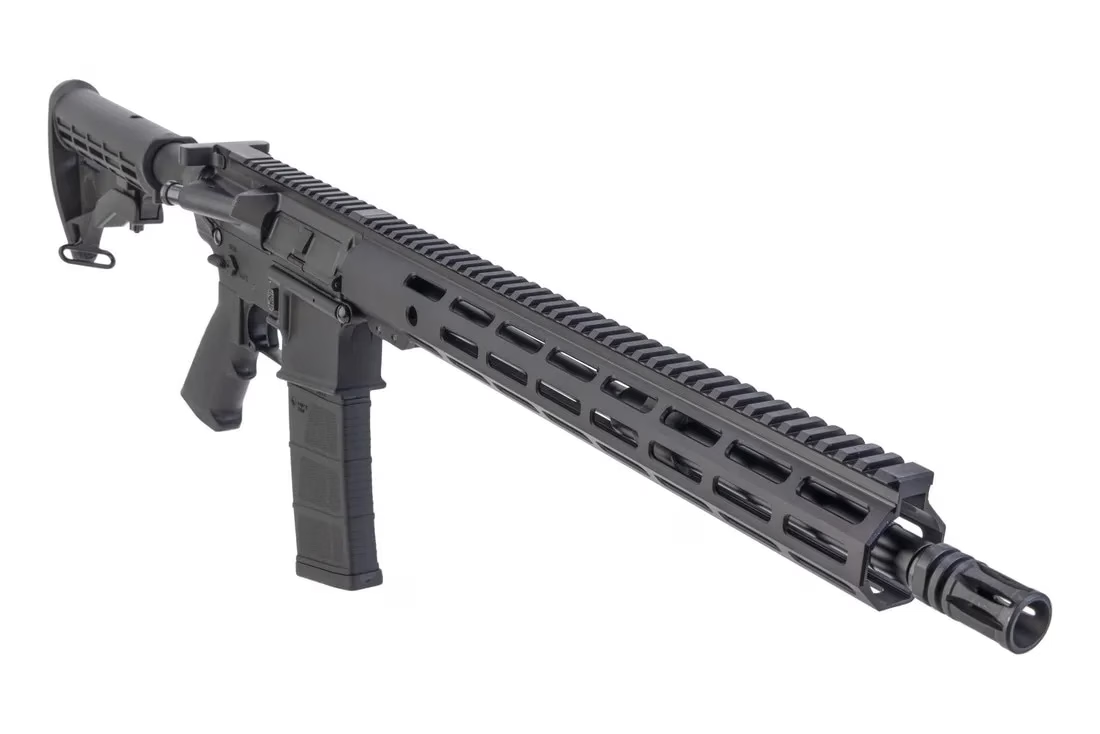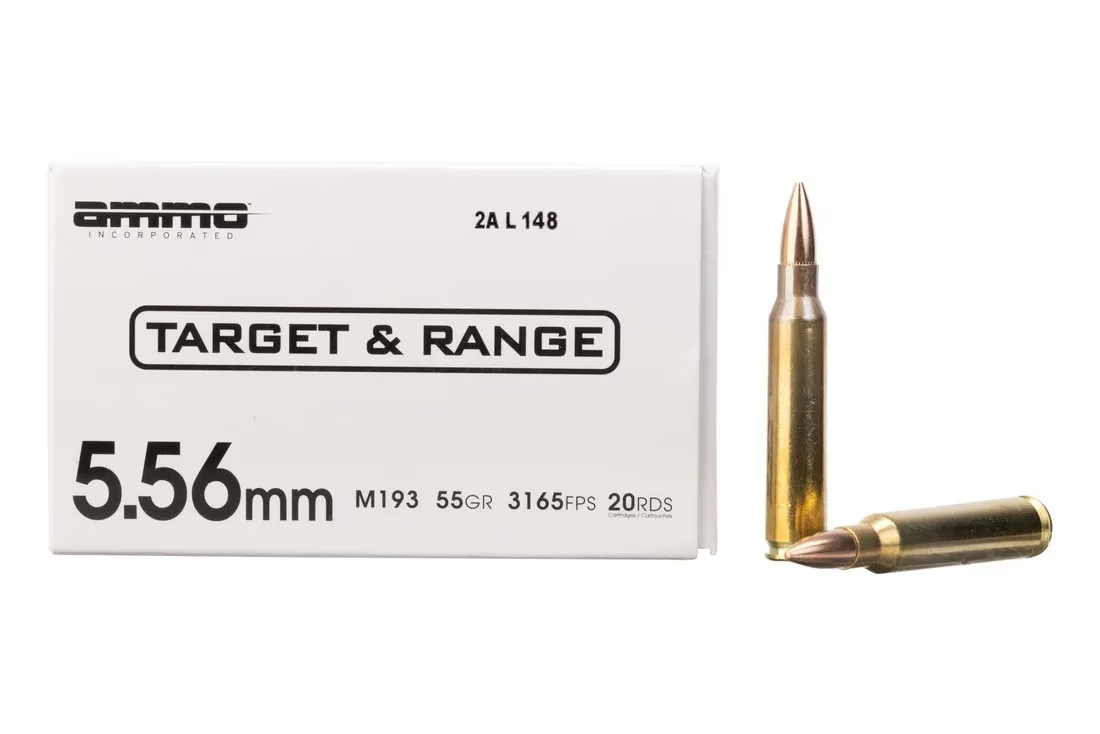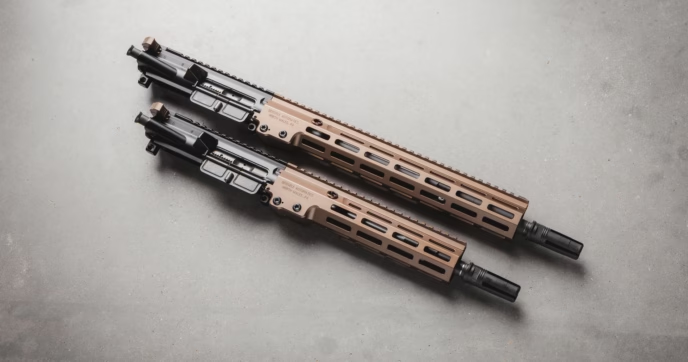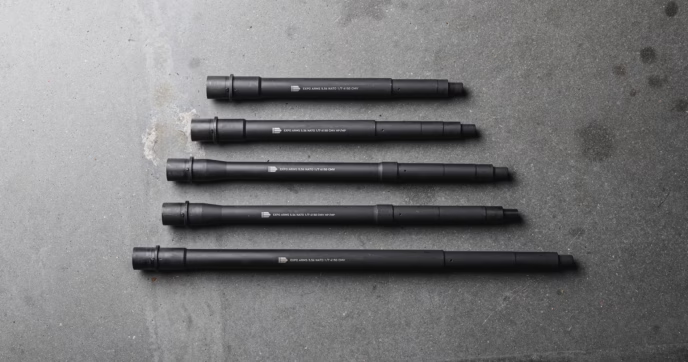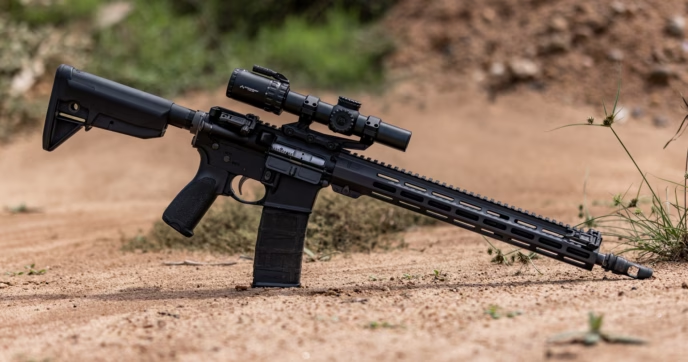Typically, the first calibers that come to mind when thinking about the AR-15 are 5.56 NATO and .300 Blackout, but with how adaptable the platform is, they aren’t the only calibers you can opt for.
In fact, the AR-15 has hosted a multitude of cartridges since its creation. Its modular design allows the barrel and BCG to be swapped with relative ease, so if the cartridge fits within the confines of the magazine well and chamber, the AR can theoretically fire it with the right components.
Today, the AR-15 is the host for a wide range of calibers—big and small—with each one having their own unique capabilities. So, if you’ve grown tired of 5.56 and .300 Blackout rifles, or are simply curious as to what else is available for the platform, follow along as we break down some of the more uncommon calibers for the AR-15.
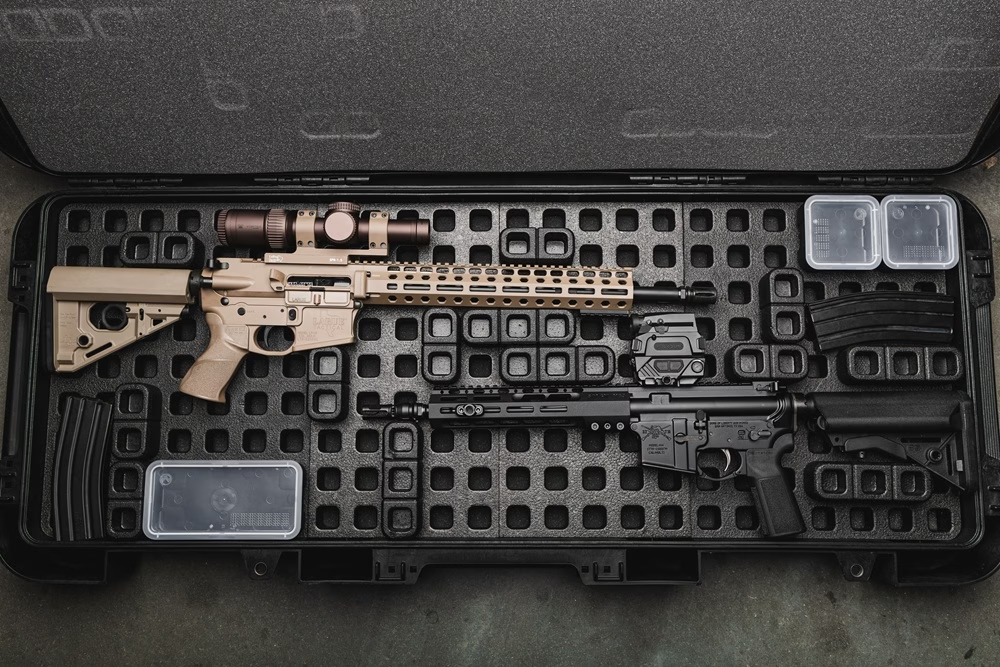
Why opt for an Uncommon Caliber
As you likely already know, 5.56 NATO is widely accepted as one of the standard AR-15 calibers. It’s a solid general-purpose round that’s suitable for recreational, competitive, and duty applications—it can even be a solid long-range cartridge, depending on the load. That said, it isn’t perfect for every scenario.
Standard 5.56 NATO ammunition has an effective range of around 500 yards, and while specialized ammo like Mk 262 and other select loads can increase its max range, it’s still only effective out to around 750 to 800 yards—and this is still highly dependent on your rifle’s setup. Plus, with it being such a high-pressure cartridge with a high velocity, it still produces a loud sound signature even when using a suppressor.
Besides 5.56 NATO, you have .300 Blackout which is easily the second most common caliber for the platform. Using a larger .30 caliber projectile, it produces a lower chamber pressure and muzzle velocity, making it much easier to suppress down to a hearing safe level. With an effective range of around 300 to 350 yards, it isn’t the best caliber for long-range applications, but it’s highly effective at close range.
While neither 5.56 nor .300 Blackout are bad options by any means, if you plan to use your rifle for a more specialized role, like long distance shooting or hunting, there are other options to consider that can be better suited for the job.
6mm ARC
6mm ARC is a relatively recent addition to the AR’s cartridge lineup that was developed by Hornady and first introduced in 2020. Using 6.5 Grendel (a caliber we’ll focus on later) as its parent cartridge, it fires a smaller 6mm projectile that’s designed to maximize its effective range and velocity.
6mm ARC produces a muzzle velocity of around 2,300 to 2,500+ FPS (feet per second) out of a 16- to 18-inch barrel and maintains a relatively flat trajectory. Likewise, it’s capable of remaining supersonic past 1,000 yards, giving it an effective range of 1,000+ yards, with shots on targets beyond this metric being more than possible so long as you have the right ammo and rifle setup.
By design, 6mm ARC performs best out of ARs with longer barrels, making it a popular caliber for SPR builds. Practically, it’s widely used by enthusiasts for everything from general purpose use to long-range competitive shooting and hunting. It is, however, a pricier choice compared to the calibers mentioned in this list—standard FMJ ammunition typically hovers around $1.00+ per round, while match-grade and other specialized loads can easily cost upwards of $2.00+ per round.
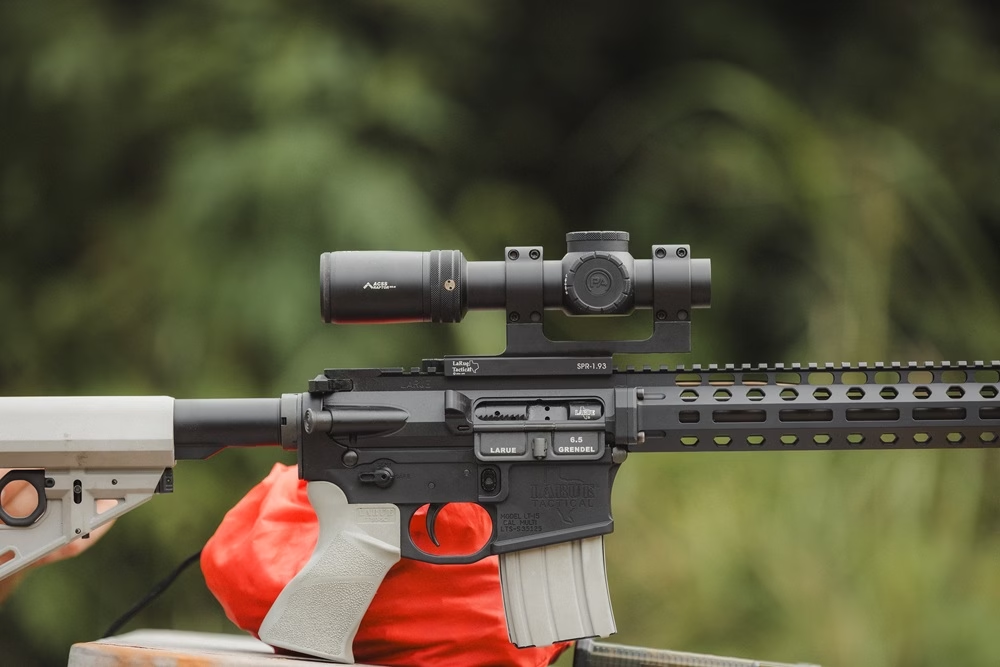
6.5 Grendel
Another solid long-distance option, 6.5 Grendel has long been one of the popular alternatives to standard calibers like 5.56 and .300 Blackout. 6.5 Grendel was developed in the early 2000s in a collaboration between Alexander Armory and engineers from the Lapua Cartridge Factory, with the goal of creating an intermediate rifle cartridge that could effectively provide ballistics on par with full-power rifle rounds.
Capable of reaching anywhere from 2,500 to 2,800 FPS, it offers excellent long-range performance and can deliver upwards of 1,800+ ft-lbs of energy on target. Like 6mm ARC, it has a flatter trajectory than 5.56 NATO, making it a better choice for long-distance applications. Depending on the load, it can have an effective range of 800 yards, though it’s capable of being effective out to 1,000+ yards.
By design, 6.5 Grendel is quite like 6mm ARC, which makes sense when you consider that 6mm ARC is based on 6.5 Grendel’s design. As such, 6.5 Grendel performs well in many of the same applications, with many enthusiasts opting for 6.5 Grendel when building rifles for long-range precision and hunting. Between the two though, 6.5 Grendel tends to be more budget friendly, with standard FMJ ammunition costing around $0.80 per round, and specialized ones costing upwards of $1.20 to $2.00+ per round.
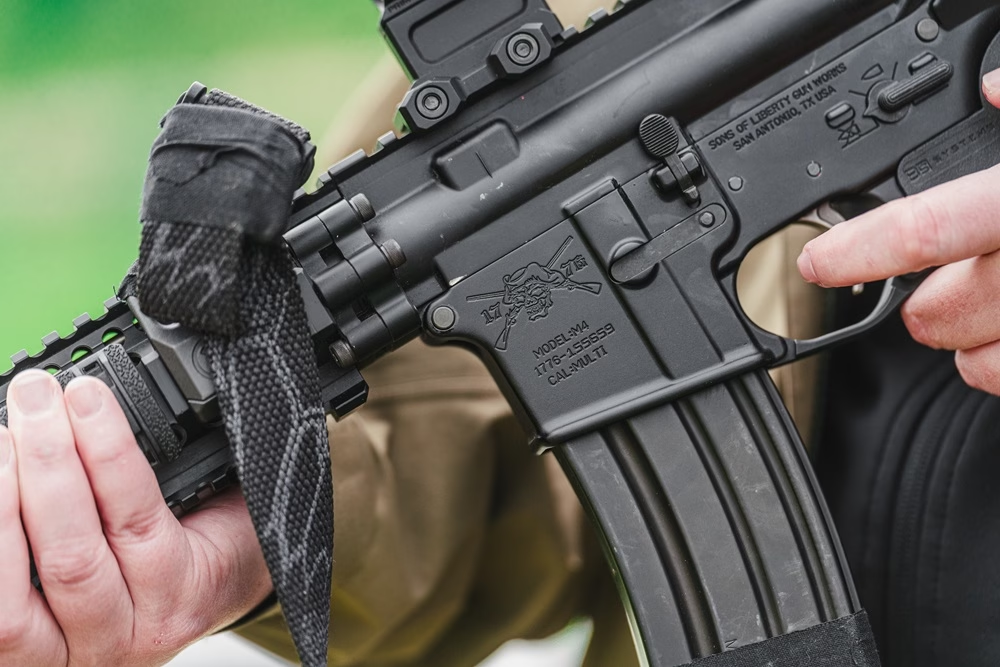
6mm MAX
Up next is 6mm MAX, a cartridge developed by BC Precision Ballistics in collaboration with Sons of Liberty Gun Works to maximize the capabilities of the AR-15 without changing too many of its internal components. At its core, 6mm MAX is essentially a necked down version of .350 Legend, another cartridge we’ll go in-depth on below. As such, it’s compatible with a mil-spec BCG, meaning the only major components that need to be swapped for a 6mm MAX build are a barrel and a dedicated 6mm MAX magazine.
This round can reach muzzle velocities up to and beyond 2,800 FPS, and it’s also capable of delivering up to 1,700+ ft-lbs of energy on target. Even further, when fired, the projectile remains supersonic past 1,000 yards, giving it an effective range of around 1,000 to 1,200 yards, potentially further with the right setup.
As it stands now, 6mm MAX is arguably the most niche caliber for the AR-15 since it’s also one of the newest cartridges designed for the platform. It was developed in 2023, and being so new, it isn’t being produced at the same scale as the other cartridges mentioned in this list. Right now, it’s only being manufactured by a few brands, so you’ll typically find 6mm MAX ammo priced around $1.50 to $2.00+ per round. Still, it’s a unique cartridge that has excellent potential for long-range precision applications.
.350 Legend
A straight-walled cartridge, .350 Legend was developed by Winchester in 2019 and has since become a popular chambering for the AR-15. Although it wasn’t specifically designed around .223/5.56 dimensions, it shares the same base diameter, making it compatible with standard AR-15 BCGs—however, a .350 Legend AR will require its own magazines.
Compared to the other calibers mentioned thus far, .350 Legend uses a larger .355-inch diameter bullet, and it has a slower velocity of around 2,200 FPS. Being slower and heavier, it has a significant amount of bullet drop past 100 yards, so it’s only effective out to around 250 yards. However, what it lacks in velocity makes up for in power, as it’s capable of imparting upwards of 1,900+ ft-lbs of energy on target.
Consequently, .350 Legend excels in hunting applications. While it isn’t necessarily the greatest choice for plinking or competitions, it’s easily one of the better cartridges for hunting on this list, and it’s relatively budget friendly. Like any other caliber, prices for .350 Legend ammo varies, but you can usually find it priced around $0.60 to $1.50+ per round.
.458 SOCOM
Developed in the early 2000s, .458 SOCOM was created out of a need for a heavier hitting round that could still fit within the AR-15 platform. Compared to 5.56 NATO, .458 SOCOM is a much bigger cartridge, firing a much larger .458 caliber projectile, weighing anywhere from 250 to upwards of 600 grains—nearly 1.4 ounces. To compare, standard 5.56 FMJ ammunition typically weighs 55 to 62 grains.
Due to its size, .458 SOCOM has a much slower velocity of 1,800 to 2,050+ FPS, and it loses momentum quickly, giving it an effective range of around 250 to 300 yards. That said, it’s easily the heaviest hitting cartridge in this list, capable of imparting 2,400 to 2,500+ ft-lbs of energy on target. Plus, sub-sonic ammunition can be reliably cycled out of an AR, making it an easily suppressible round when using the right suppressor.
If you plan to opt for a .458 SOCOM AR, it’s important to note that its total magazine capacity will be limited to only 10 rounds. Although it can fit and feed out of a standard AR mag, it essentially turns it into a single stack one because of its size. Plus, the follower isn’t designed for the cartridge, making a dedicated .458 SOCOM magazine the better choice. Regardless, .458 SOCOM ammo is typically priced around $1.00 to $1.50+ per round, with specialized loads costing upwards of $2.00 to $4.00 per round.
Finally, one last thing to consider before opting for this caliber is its compatibility with the AR-15, more specifically, its upper. Although .458 SOCOM is compatible with the AR-15, you must remember that the narrow ejection port on the upper is designed around .223/5.56, meaning without a proper gas tuning or buffer assembly, you run the risk of having jams or other malfunctions. To get around this, Aero Precision, for example, produces an XL AR-15 upper receiver, which has an enlarged ejection port made specifically for large caliber AR builds.
6.8 SPC
6.8 SPC is another interesting cartridge originally proposed as a heavier hitting replacement for 5.56. Developed by Remington in collaboration with the USSOCOM as part of their Enhanced Rifle Cartridge Program, Remington took their .30 Remington cartridge and necked it down to fit a 6.8mm projectile.
By design, it’s like 5.56 in terms of its best use cases and effective range. Like 5.56 NATO, 6.8 SPC has an effective range of around 500 yards, and is optimized for use in rifles with barrel lengths of 12 to 16 inches. However, it differs greatly when comparing their respective muzzle energies, as 6.8 SPC easily produces upwards of 1,500 to 1,700 ft-lbs of muzzle energy, depending on the load—which is nearly 40% higher than select 5.56 NATO loads.
Though it isn’t in widespread use by the Military, 6.8 SPC AR-15 rifles have still been popular on the civilian market, with them being used primarily for hunting and general-purpose use. Depending on the load and projectile type, you can expect to find 6.8 SPC ammo priced around $0.60 to $0.80 per round for standard ammunition, while more specialized options can range anywhere from $1.00 to $2.00+ per round.
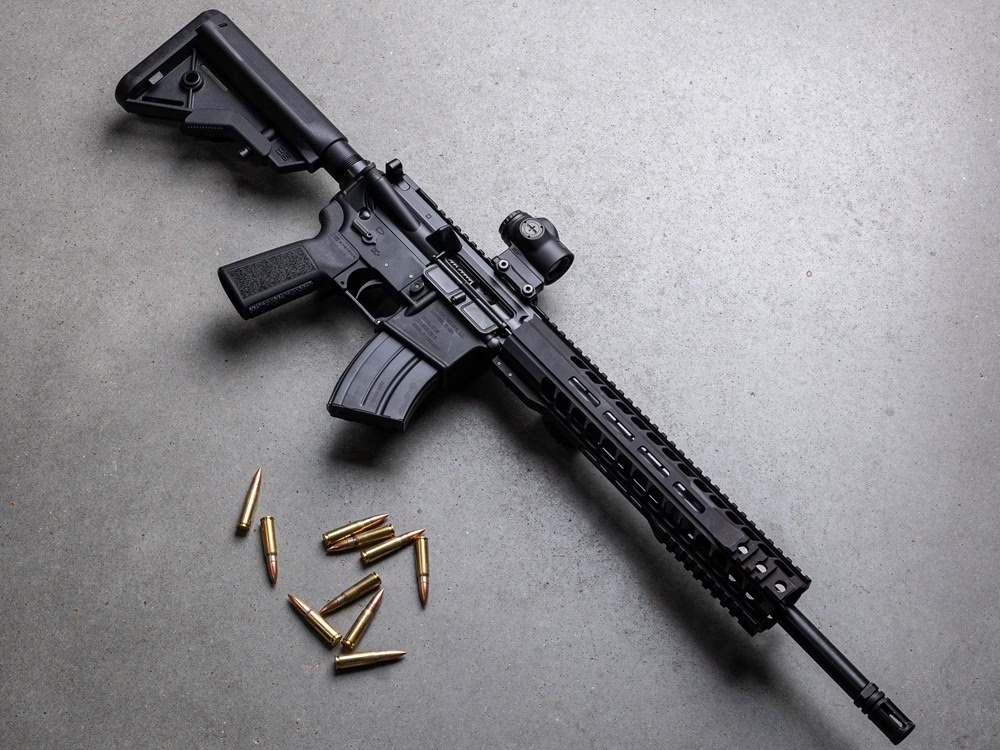
7.62×39
Often viewed as the antithesis of .300 Blackout, 7.62×39 has long been a favored cartridge for the AR-15. Although it isn’t as obscure as some of the other calibers mentioned throughout this list, it’s usually overshadowed by .300 Blackout thanks to their similarities in performance. 7.62×39 is one of the oldest intermediate rifle cartridges still in use today. It was first introduced and adopted as Russia’s standard issue cartridge in 1943, being used in rifles like the SKS, though it’s now synonymous with the AK-47 and AKM.
Performance-wise, it’s quite like .300 Blackout. Both cartridges use a .30 caliber projectile, have an effective range of around 450 yards, and can be reliably suppressed when using sub-sonic ammunition—in fact, .300 Blackout’s metric measurement is 7.62×35, meaning there’s only a 4mm difference in their case lengths. Unlike .300 Blackout though, 7.62×39 requires its own BCG and magazines to be used in an AR-15. Still, it’s commonly used for everything from recreational shooting to hunting, especially since it can produce upwards of 1,700 ft-lbs of muzzle energy.
Despite import restrictions on Russian made ammunition, 7.62×39 is still in widespread production by both U.S.-based manufacturers, like Hornady, Federal and Winchester, and by foreign manufacturers, such as Belom and Sellier & Bellot—plus, there’s a lot of surplus ammo still in circulation, though it’s often corrosive. Depending on which you look at, 7.62×39 ammo can vary in price, anywhere from as little as $0.30 per round to upwards of $0.50 to $0.65+ per round, making it an affordable alternative to 5.56 and .300 Blackout.
Conclusion
While many assume that the AR-15 is limited to common calibers like 5.56 NATO and .300 Blackout, there exists an entire world of unique cartridges that are compatible with the platform that each have their own unique features and best use cases.
For long-range precision cartridges fit for SPR builds, calibers like 6mm ARC, 6mm MAX, and 6.5 Grendel push the limits of the AR’s maximum effective range. Meanwhile options like .458 SOCOM, 6.8 SPC and 7.62×39 give the AR-15 more power at close to medium range—and they all serve as excellent hunting cartridges for small to medium game alongside .350 Legend.
A key takeaway to consider is that the AR is easily one of, if not, the most adaptable rifle systems ever designed. So, no matter what your intended purpose or preferences are, you have no shortage of caliber options to choose from when building your next rifle.
